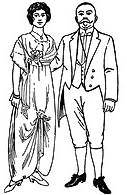In Our Own Time: Native American Timekeeping
When Europeans arrived in North American, they brought their own calendars and understanding of the passage of time. Native peoples, they found, related to time in ways both similar and very different. Decide whether the following statements on Native timekeeping practices are true or false.
1. Winter counts, kept by the Lakota people, mark each year in a Lakota band's history with a picture depicting an important event. For the year 1833, many Lakota winter counts show the same event: stars falling from the night sky.
True. In the winter of 1833, the Leonid meteor shower,  visible each November, blazed with extraordinary strength. The falling stars caught the attention of people throughout North America, and many Lakota bands chose the shower as the event to stand for the year. Later in the 1800s, ethnologist Garrick Mallery (1831-1894) identified the pictures as standing for the meteor shower, allowing scholars to match the years of the winter counts with the European calendar.
visible each November, blazed with extraordinary strength. The falling stars caught the attention of people throughout North America, and many Lakota bands chose the shower as the event to stand for the year. Later in the 1800s, ethnologist Garrick Mallery (1831-1894) identified the pictures as standing for the meteor shower, allowing scholars to match the years of the winter counts with the European calendar.
2. Prior to introduction to European calendar systems, the Native peoples of Alaska used peg calendars, wooden calendars in which a peg was moved forward in a series of holes day by day to mark the passage of time.
False. Russian colonists and missionaries  introduced peg calendars to the Native peoples of Alaska so that they could track the holy days of the Russian Orthodox Church. Russian contact with Alaskan cultures began in the 1700s, and settlement of the region, accompanied by cultural exchange, continued until 1867, when the U.S. purchased Alaska from the Russians. Peg calendars remained in use into the 20th century.
introduced peg calendars to the Native peoples of Alaska so that they could track the holy days of the Russian Orthodox Church. Russian contact with Alaskan cultures began in the 1700s, and settlement of the region, accompanied by cultural exchange, continued until 1867, when the U.S. purchased Alaska from the Russians. Peg calendars remained in use into the 20th century.
3. The Winnebago Native Americans recorded time using calendar sticks, in which notches were cut to signify important events, lunar cycles, years, and other units of distinction and division.
True. The Winnebago Native Americans did use sticks  to record the passing of time in this manner. However, the use of calendar sticks was not limited to the Winnebago. Other Native American groups throughout North America used sticks, including the Pima, the Osage, and the Zuni. The markings on sticks and their daily and ceremonial use varied from region to region and people to people.
to record the passing of time in this manner. However, the use of calendar sticks was not limited to the Winnebago. Other Native American groups throughout North America used sticks, including the Pima, the Osage, and the Zuni. The markings on sticks and their daily and ceremonial use varied from region to region and people to people.
4. The Hopi calendar divides the year into four sections. Spirits known as katsinas (or kachinas) visit the Hopi people in two of these sections, alternating with the two sections free of the spirits.
False. The Hopi calendar divides the year into two halves,  one beginning around the summer solstice (June 20th or 21st) and the other with the winter solstice (December 21st or 22nd). After the winter solstice, katsinam, benevolent spirits, visit the Hopi people, personated by Hopi men in masks and costumes. Following the summer solstice, the katsinam leave the Hopi again.
one beginning around the summer solstice (June 20th or 21st) and the other with the winter solstice (December 21st or 22nd). After the winter solstice, katsinam, benevolent spirits, visit the Hopi people, personated by Hopi men in masks and costumes. Following the summer solstice, the katsinam leave the Hopi again.
 The Smithsonian National Museum of Natural History's online exhibit Lakota Winter Counts displays the images from 10 winter counts. Annotations describe what each image represents, and the website offers a teaching guide and other resources. Check the entries for the winter of 1833-1834 to see the counts' depictions of the 1833 meteor shower.
The Smithsonian National Museum of Natural History's online exhibit Lakota Winter Counts displays the images from 10 winter counts. Annotations describe what each image represents, and the website offers a teaching guide and other resources. Check the entries for the winter of 1833-1834 to see the counts' depictions of the 1833 meteor shower.
The website Alaska's Digital Archives includes a collection of digital resources, including photographs and documents, on Alaskan Native history. A photograph of a 1900s peg calendar, decorated in Aleut or Alutiiq style, can be found here.
The National Watch and Clock Museum provides a travelling trunk program that includes a "Native American Timekeeping Travel Trunk." For a $50 fee plus shipping charges, you can check out the trunk, which contains background material on calendar sticks, winter counts, and the Aztec calendar, as well as samples of and directions for related crafts.
Rainmakers from the Gods: Hopi Katsinam, an online exhibit from Harvard's Peabody Museum of Archaeology and Ethnology, follows the ceremonies of the Hopi year and includes pictures of katsina dolls associated with each ceremony.
To find more resources on Native American history and culture, check out the History Content section of our website. Select the section that corresponds with the material type you'd like to find—Website Reviews points you toward quality websites, Online History Lectures catalogs online audiovisual presentations, and History in Multimedia collects field trip possibilities from across the country. In the search boxes, choose "American Indians" from the dropdown "Topic" menu, or enter the specific keywords you'd like to find resources on in the "Keywords" box and hit "Submit."
- Alaska Virtual Library and Digital Archives, (accessed September 25, 2009).
- Harvard University, Peabody Museum of Archaeology and Ethnology From the Gods: Hopi Katsinam, (accessed September 25, 2009).
- Kathleen Lidfors, "Review: Russian America: The Forgotten Frontier," The Public Historian 12, no. 2 (Spring 1991), (accessed September 25, 2009).
- Alexander Marshack, "A Lunar-Solar Year Calendar Stick from North America," American Antiquity50, no. 1 (Jan. 1985), (accessed September 25, 2009).
- Northwestern University Library, Edward S. Curtis's The North American Indian: Photographic Images, (accessed September 30, 2009).
- Smithsonian National Museum of Natural History, National Anthropological Archives, Lakota Winter Counts, (accessed September 25, 2009).





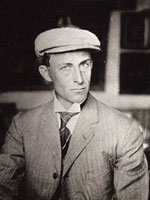
 In 1790, federal marshals collected data for the first census, knocking by hand on each and every door. As directed by the U.S. Constitution, they counted the population based on specific criteria, including "males under 16 years, free White females, all other free persons (by sex and color), and slaves." There was no pre-printed form, however, so marshals submitted their returns, sometimes with additional information, in a variety of formats.
In 1790, federal marshals collected data for the first census, knocking by hand on each and every door. As directed by the U.S. Constitution, they counted the population based on specific criteria, including "males under 16 years, free White females, all other free persons (by sex and color), and slaves." There was no pre-printed form, however, so marshals submitted their returns, sometimes with additional information, in a variety of formats.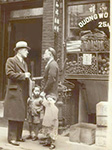
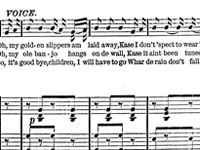
 (which could not be easily preserved and shipped to the troops). Poultry was not rationed because it, too, was difficult to preserve and ship, but turkey shortages were widespread during the holiday season of 1943. This was partly because farmers were obliged to offer their turkeys first to the government before selling them on the open market. Cooks who were not prepared to hunt wild turkeys were encouraged to roast a duck or a chicken for Thanksgiving.
(which could not be easily preserved and shipped to the troops). Poultry was not rationed because it, too, was difficult to preserve and ship, but turkey shortages were widespread during the holiday season of 1943. This was partly because farmers were obliged to offer their turkeys first to the government before selling them on the open market. Cooks who were not prepared to hunt wild turkeys were encouraged to roast a duck or a chicken for Thanksgiving.

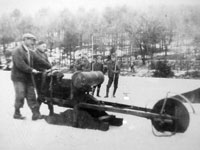
 2 hours. The manual advises, "After having mastered the form of the step, practise it at any convenient opportunity, though it is much better to have a specified hour each day. Two hours per day is little enough if the student is ambitious of excellence."
2 hours. The manual advises, "After having mastered the form of the step, practise it at any convenient opportunity, though it is much better to have a specified hour each day. Two hours per day is little enough if the student is ambitious of excellence." Open Position; Yale Position
Open Position; Yale Position 